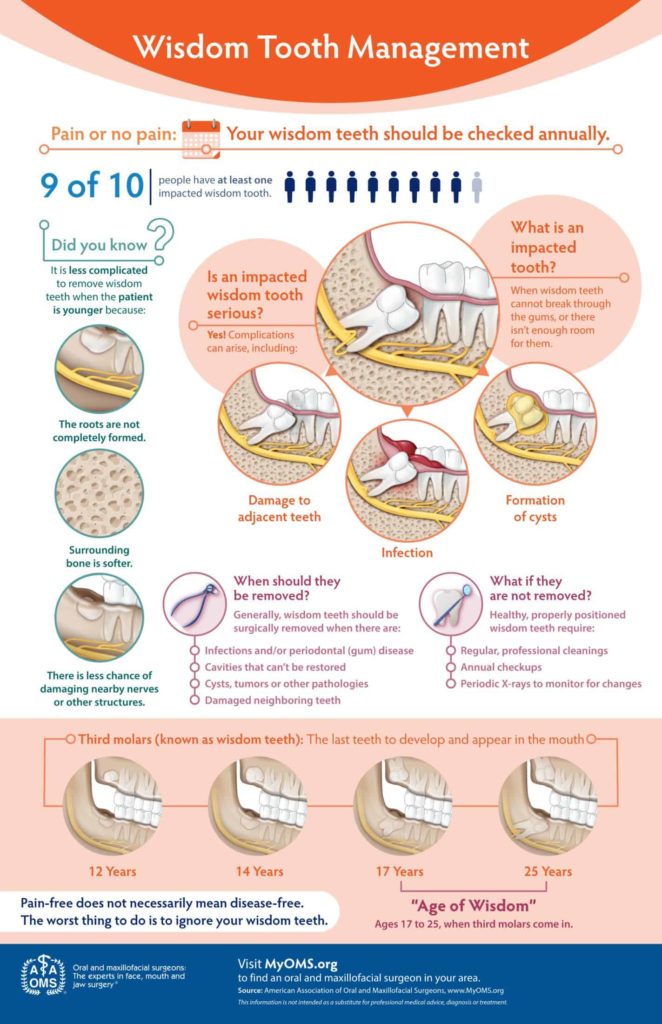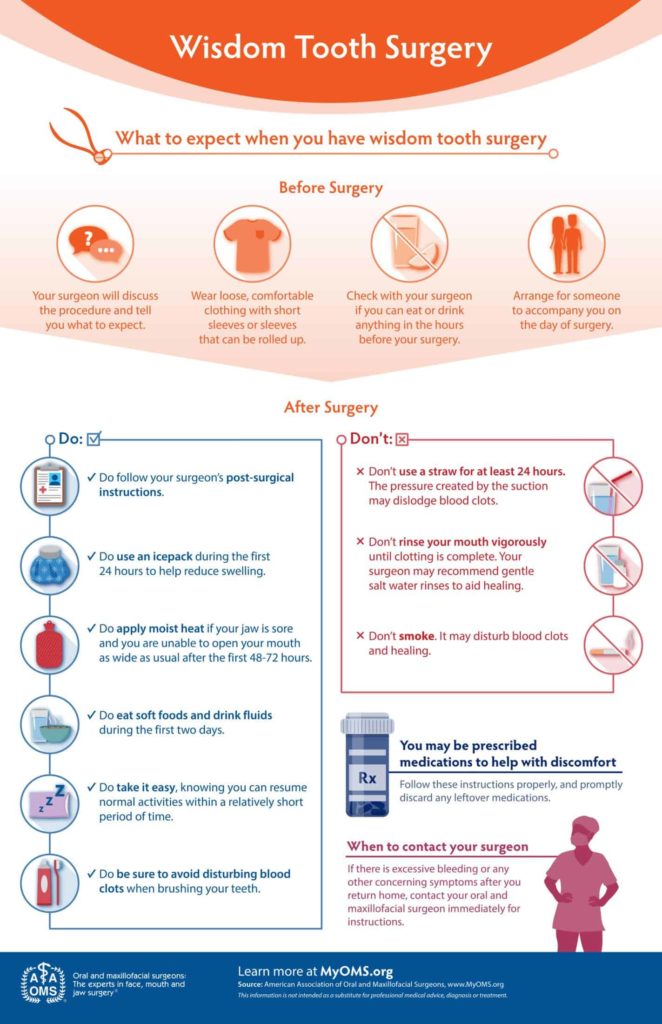Wisdom Teeth Extractions

Wisdom Teeth Removal and Care
Most people’s mouths only have enough room for 28 teeth. When your wisdom teeth start to come in, that is four additional teeth trying to cram their way in. Since your wisdom teeth are the last teeth to erupt in through your gums, they come to the party a little late – all your other teeth have settled into their places. Wisdom teeth can begin to grow in sideways, only partially erupt, or even get stuck beneath the gum and bone. Known as impacted teeth, those that get stuck may resort to shifting position as the try to find a pathway for eruption. When wisdom teeth do not erupt through the gumline properly, they can create severe problems for the patient, including:
- Risk of infection in tissues surrounding the tooth
- Disruption to the orthodontic or natural alignment of teeth
- Formation of tumors or cysts around impacted wisdom teeth, resulting in jawbone or tooth destruction.
Though some patients may not require the removal of their wisdom teeth, most often, it is needed to protect your overall oral health.
Wisdom Teeth: Impacted
Wisdom Teeth: Patient Safety
Wisdom Teeth: Impacted or Crowding
Wisdom Teeth: Pain or No Pain
Having Third Molar Surgery
We’ll Start with an Oral Examination
In order to evaluate the state of your wisdom teeth, we’ll first do a thorough examination and take x-rays of your mouth. This will help us determine if your wisdom teeth pose a current or future threat to your oral health. Early detection of issues results in better outcomes for our patients, so we recommend the first evaluation be completed in a patient’s mid-teenage years.
Wisdom Teeth Removal
If a wisdom teeth extraction has been recommended, prior to surgery our team will discuss the procedure as well as the various forms of anesthesia we may use and any risks involved.
- We may administer laughing gas, or nitrous oxide, to the patient for relaxation.
- In most situations, we believe it is easier on the patient to perform the surgery under “twilight” anesthesia. All our patients receive a local anesthetic to numb the area and ensure there is no pain during the procedure. Our primary goal is to ensure your comfort.
- After we remove the teeth and roots, we suture the gum tissue if necessary. We place gauze into the incision points to control bleeding.
- After the surgery, we allow you to rest under our supervision until you can be taken home. Our team will provide you with a post-op kit which includes care instructions, any necessary prescriptions, and a follow-up appointment so we can check on your healing progress.
What Can I Expect Afterward?
Following surgery, you may experience some swelling and mild discomfort, which are part of the normal healing process. Cold compresses may help decrease the swelling, and medication prescribed by your surgeon can help manage the discomfort. Immediately following the procedure and for several days afterward, you will need to modify your diet and follow careful instructions to avoid disrupting the healing clot from the socket. Please see our extractions page for a full list of post-op instructions.
Call Us Today to Schedule Your Appointment
We take pride in making the entire process as streamlined as possible. The longer you wait to extract impacted wisdom teeth, the more discomfort they can cause, and the more difficult the procedure becomes. Contact our office today for a wisdom teeth consultation.


